Centralized Leasing: 11 Ways to Create Prospect-Centric Apartment Marketing
Are you a Starbucks fan? Do you make frequent Target runs? Do you have other favorite local or national brands you regularly seek out? I’m guessing the answer is yes.
Now, imagine that every Starbucks and Target location had a different name on the door.
Instead of Starbucks, what if your neighborhood location was named Buckhead Java Reserve or Espresso House at The Woodlands, both with tiny “Proudly managed by Starbucks Coffee” decals on the front door?
Instead of Target, what if your local store was called Shoppers Pointe of Arlington, with “A unique shopping experience by Target Brands, Inc.” at the bottom of their emails and weekly circulars?
Do you think you’d trust these brands as much as you trust Starbucks or Target now? If you went to a different location on the other side of town or in a new city, do you think you’d have the same brand association (whatever association that may be)?
My guess is probably not.
You trust these brands because, regardless of where you are, you pretty much already know what kind of experience to expect before you even walk in the door. Sure, you might prefer the local coffeehouse, but you have a go-to Starbucks order in mind if you’re running errands across town or running through an airport.
That consistency in experience helps to build trust. Trust builds confidence. Confidence increases the likelihood that you’ll come back and become a repeat customer.
Yet when we look at how apartment communities are marketed, we often see the exact opposite approach.
Every community is marketed with its own unique name, vibe, and character. Each property gets its own logo, brand identity, and story. There’s often little or no connection to the property owner or management company and the other local apartment buildings/communities that those companies offer.
This serves to make a highly fragmented market only that much more so. It makes shopping for an apartment a painfully difficult experience for the customer, and it increases apartment marketers’ reliance on third-party marketplaces (Craigslist and ILS sites like Apartments.com and Zillow), aggregators, and locators to get in front of new renter prospects.
Let’s Market The Way Customers Shop
In short, the way we market apartments directly opposes how customers are used to shopping. This simultaneously reduces the reach of each apartment community’s “brand value” and increases the amount each community needs to spend on advertising to stand out in the marketplace.
Rather than (or maybe in addition to) trying to build a unique brand for each asset, it’s time that apartment marketers invest in their brands beyond the individual properties. Think about how you can be recognized at the neighborhood or regional level, and look at ways to reach more people well before they ever fully understand which properties are yours.
The industry has come to call this approach Centralized Leasing. Here’s why we think it’s a perfect fit for multifamily.
Why Centralized Leasing?
1| It aligns your marketing with how customers shop.
We first noticed this while managing social media accounts for our multifamily clients. When renters are starting their search, they don’t say, “I want to live at XYZ community because they have great finishes and the amenities are amazing.” Instead, they start with a premise closer to “I need a 2 bedroom within 20 minutes from my office downtown” or something similar.
They’re looking for options. Rarely are they ready to commit to a single property at this point.
Centralized leasing gives you the option to share multiple options that could be a good fit for the prospect. It fits the intent at the beginning of the search: “Show me my options.” (Google knows that renters at this stage want to see options, too … which is exactly why the ILS advertising sites and marketplaces dominate the search results. They have the most options.)
2| Build brand awareness and trust
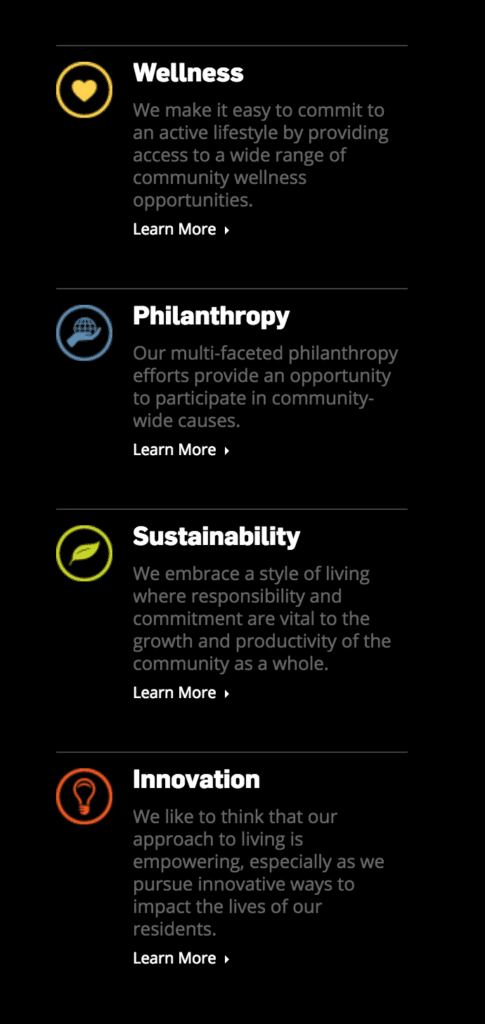
Here in Columbus, Kaufman Development has done a nice job with this. They’ve defined a core set of company values they promote everywhere — from the corporate website all the way through to the signage at each of their properties.
More importantly, these aren’t just words. They live these values and extend them to their customers. Philanthropy is a company focus, and they make a point to create and offer regular volunteer opportunities for their staff and residents. The values mean something, and customers can identify and connect with them.
Locals have learned what Kaufman stands for, and that association makes it easier for Kaufman to introduce their brand to new neighborhoods throughout Columbus. People already know the brand and have some initial sense of whether they want to do business with them or not. That’s much harder to accomplish if you’re trying to market each property as a unique brand with its own character and target audience.
3| Stop competing against yourself
When you focus on the property brand, you’re forced to promote that brand against everything else in the area … even if that means you’re competing against your other properties nearby.
With a centralized leasing approach, you can take a much more helpful, consultative approach that better serves both the prospect and your bottom line. Imagine a phone conversation or email response like this:
“Yes, we have a few options you’re going to love here, and I also want to set you up with our sister community a mile down the road, just in case you see something there you like better. Either way, we’ll be able to take care of you.”
4| Reduce advertising costs
When you compete against yourself, you naturally incur more overall marketing expenses across all your locations. The more you can do to create a known brand in your local market, the less you need to work to gain attention for your next community.
Imagine if every Target store had to buy their own ads to get your attention. Their costs would be insane; wave those discount prices goodbye. Even competing auto dealers in the same metro area will often join together in co-op ad campaigns and websites to make it easier for customers to reach them.
How can we get started with Centralized Leasing?
Ok, you’re starting to see the benefits of Centralized Leasing. But how can you effectively implement this at your community and across your organization?
Here are a few ideas to help you get started:
1| Build a property management brand people recognize
What’s the unique thing about DoubleTree hotels? You probably said the warm cookies when you check in.
Ever stay at a Kimpton hotel? You probably know they’re super pet-friendly and they host nightly happy hours. (Kimpton is one of my favorite examples of how multifamily companies should be marketing their communities.)
It could be shared values and activities like Kaufman, or something completely different — maybe you become the company who buys dinner for every new resident the day they move in.
It doesn’t have to be much. Whatever it is, be known for something people will recognize.
2| Show all the options with neighborhood pages on your corporate portfolio site
Use your corporate portfolio site for more than sharing information about the company. Create a full search experience so prospects can explore all the options you have to offer.
Again, go back to that search intent — people want to see their options before making a decision, especially for a big ticket item like an apartment.
As part of the search functionality, give visitors the ability to browse your communities by neighborhood. Or give visitors the option to browse pages dedicated to each of the markets and neighborhoods where you have properties. (Or ideally, do both.)
Princeton Properties in Massachusetts and Mills Properties in Missouri are both great examples of well-executed neighborhood pages, and in both cases, they’re reaping the SEO benefits of having more of the content that visitors are actually looking for.
Want more examples? Outside multifamily, I don’t think there’s a better example of this content in action than what Airbnb is doing with their Locations pages.
Now take this a step further.
Try collecting email leads from these neighborhood pages, even before the visitor has made it to the individual property pages. On our clients’ portfolio sites where we give prospects the option to provide their email address as part of the initial search, we regularly see over 35% of visitors do exactly that.
Think about that: 35% of visitors are providing their email address before they’ve even looked at a single property! Talk about an ideal opportunity to reach that prospect earlier in the process and set yourself up for extremely targeted email and ad remarketing campaigns that lead those prospects to their perfect apartment.
Here’s what that ask looks like for the email address:
3| Use multi-property landing pages
Apartment companies often lump their marketing websites into two options: corporate portfolio websites and individual property sites. But there’s at least one more option you should consider if you have multiple communities: neighborhood-focused landing pages. What’s a landing page? In marketing, a landing page is a “standalone web page distinct from your main website that has been designed for a single focused objective”. If you can’t undertake a full redesign of your corporate site (or if you’re on a website platform that doesn’t allow you to create new pages … somehow, those still exist!), landing pages might be the perfect option for you. You can roll them out quickly, and they’re built for one focused objective: lead generation. We know people are searching for “apartments in XYZ neighborhood,” so don’t send that traffic to the homepage of your single property website. (Seriously, please stop doing this.) Instead, send those customers to your dedicated landing page that shows them all of your properties in that area — all the options they want to see in that neighborhood. Collect the lead right there with a simple form, or use it as a way to route that traffic to the property website that makes the most sense for that customer. You can easily build landing pages yourself with tools like Unbounce and LeadPages, and we offer custom landing pages here at 30 Lines, too. (The benefit being that ours integrate directly with the apartment industry’s popular lead management tools.)4| Run ads promoting your corporate site and landing pages
It can take time to see all the benefits of SEO for your apartment websites, especially with all the competition from established competitors and the huge ILS sites. But online advertising through Google and Facebook can be an affordable way to generate immediate traffic, especially if you have content that is more focused on what the searcher is actually looking for (like those targeted landing pages I just mentioned). Use your AdWords and Facebook ads to drive traffic to your portfolio site or your neighborhood landing page. On Google, because that content is a better match to what the searcher wants, you’ll typically see higher Quality Scores, lower cost-per-click, and higher clickthrough rates. More relevant content means more effective campaigns. Then you can use your remarketing (email, display ads, and Facebook/Instagram) to stay in front of those folks and push them to the individual properties that need the traffic most. (Our RentPress Leads product is perfect for this. Take every lead you get from any ILS, and add it directly to a central list where you can remarket to those prospects through email and follow-up ads.)5| Promote your company’s social accounts as regional locator services
We first noticed this whole Centralized Leasing trend because of questions we were receiving through clients’ social media profiles. Potential customers were turning to Facebook and Twitter because they weren’t getting the answers they were looking for through the apartment websites.
So if we are receiving messages like “Hey, I’m looking for a 1 bedroom near Lincoln Park. Which properties should I look at first?”, it only makes sense to get ahead of that and actively promote that as a service.
How?
By listening. Create saved searches for phrases like “apartment hunting in [Your City]” on Twitter. Follow conversations on Nextdoor and other online forums in your community. Then jump in. Talk with those folks. Be helpful. Steer them in the right direction.
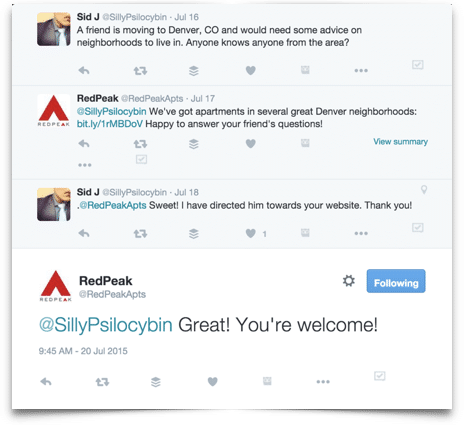
Yes, you can automate some of this (to an extent), but this one is going to take some time and effort. Setting up your saved searches and alerts will definitely help, but it’s going to take at least a few minutes a day to browse the latest conversations and see if there are any opportunities to jump in and assist. But the benefit of being there is that it’s wide open — there aren’t many other companies doing this today, so you’ll have those prospects all to yourself.
One more tip here: As Facebook turns the newsfeed into a recommendation engine, make sure that your brand page is set up as a Local Business page and that you’re working to get customer reviews on that page.
Taking those steps will help make it easier for others to recommend your page, and the reviews will help your page stand out against the rest of the pack if your customers like what you’re doing.
6| Use live chat or a chatbot on your portfolio website to steer prospects to the right properties for them
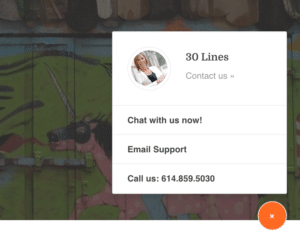
Offering live chat as an option on your site gives visitors the opportunity to talk to someone in real-time, and it gives you the opportunity to steer those visitors to the most relevant communities or content that helps to answer what they’re looking for.
We’ve found that many visitors won’t otherwise convert on your apartment site, because they think they’re not ready to apply yet. Maybe they have a question about the pet policy, or how you handle a credit report with a foreclosure on it, or any other question that may feel like an obstacle to them. Being there through live chat enables you to address those questions before you lose the visitor and move them into your lead follow-up and nurturing efforts if they’re indeed a good fit for your community.
7| Run a pop-up on your corporate portfolio site
I know what you’re thinking. “I hate pop-ups. And didn’t Google say they can hurt my SEO now?” Well, for the sake of your conversion rate, I’m going to ask you to get over your own feelings on this one. Pop-ups work, plain and simple. And no, Google didn’t say all pop-ups are bad for SEO. They actually provided the exact guidelines to follow to make sure you’re doing pop-ups the right way. (Here’s more on that.) Here’s an example of a pop-up we currently run on a client’s portfolio site:8| Send weekly “Featured Property” emails
As you collect leads from the ILSs, from your portfolio site, from your landing pages, you want to find ways to stay in front of these prospects as you’re helping them through their search. They haven’t yet told you which specific property they’re interested in, or maybe they’ve expressed interest in multiple properties that could fit their needs. Either way, it doesn’t make sense to work with them using the same follow-up process you use for a “single property lead.” So what do you do with these prospects? Show them what you have to offer with regular “Featured Apartments of the Week” emails. (Here are more ideas if you’re not sure what else you should be doing with your email marketing.) The weekly “Featured Apartments” emails are perfect, because they allow you to direct traffic to the properties that need immediate attention, and it gives you a regular opportunity to raise awareness for your other content, too — showcase your blog, your Instagram feed, your upcoming event schedule on Facebook, whatever you want. Here’s an example of what a “Featured Apartments” email looks like.9| Link to sister properties from your property website
Here’s an easy one. Make it easy for website visitors to see what else you have to offer. If the visitor is on the portfolio site, this is easy. (See idea #2 above.) If the visitor is on one of your individual property websites, show them the other properties you offer nearby. Create a neighborhood page, or a page called something like “Other Communities You Might Like.” Include a photo and link to the other property websites, and show where the other communities are located on a map. Here’s a great example from Borror. Not only are you helping the prospect see what else is nearby (and keep them in your portfolio), but this tactic also serves as an effective way to build inbound links for your websites, which still carry weight to help your overall local SEO efforts.10| Send automatic follow-ups to every ILS lead introducing all your local properties
We already established that the ILSs tend to dominate the search results for those broad, unbranded terms like “Houston apartments” … which often means they’re among the first sites prospects are going to see when they’re just starting their search. If that’s the case, then a new lead from one of the big ILSs is the perfect opportunity to introduce not only the initial property they expressed interest in, but also your property management company and the other nearby properties they might be interested in. How? Any way you can. You’ll get their email address in the initial ILS lead, so you can (and should) obviously move those leads into your email marketing system. But did you know you can also use those emails to create remarketing lists in Google, Facebook/Instagram, Twitter and more? You can. All you have to do is take your current prospect list, upload to one of those advertising sites, and create hyper-targeted campaigns that only go to the people who you know have already expressed interest. (I know I mentioned it earlier, but if you’re looking for an automated way to add your ILS leads to Facebook, Google AdWords, or Twitter, we built something just for you.) These remarketing ads are super effective because they’re so focused on your current prospects, and they’re inexpensive because you’re only paying to reach a small, very specific audience. Use them to bring prospects back to the property they already saw, and introduce them to everything else your company has to offer.11| Create a centralized leasing experience where it makes sense
A number of boutique property management companies across the country have run centralized leasing offices for years. Our client, Borror, is doing it here in the Short North in Columbus.
The challenges preventing prospect-centric apartment marketing
While we’ve seen time and time again that multifamily companies can only benefit from the prospect-centric Centralized Leasing approach, there are inherent barriers that have prevented many companies from embracing comprehensive marketing programs that operate like this. Any of these sound familiar?
Separate entities and operating budgets
In the typical multifamily portfolio, every property is set up as its own entity, with its own operating budgets and set of marketing challenges. Every property brand is created to stand on its own, and too often, there’s never been any consideration given to how to combine marketing efforts with sister properties in an effective way.Organizational structure and compensation programs
When it’s every property for themselves, each leasing team is focused entirely on their property alone. There’s little or no bonus or commission if you lease an apartment at a sister community, so there’s no incentive for on-site teams to think bigger. (There are some exceptions, but this is the case in many companies we’ve seen.) And while your company may have a small marketing team at the corporate or regional level, these marketing organizations are typically spread far too thin, and they’re not given the team and resources necessary to execute the centralized leasing experience at a metro or neighborhood level (before the prospect gets into the “traditional” leasing sales process).Competing ownership groups and ego
If you’re a third-party fee manager, you might have trouble getting competing ownership groups to buy into a process like this. Why should they pay into a marketing program that helps properties they don’t own? Well, this is your opportunity to show what your brand is actually worth to them. When real estate companies buy into hotels, they’re often buying into the known brand — they’re buying into a specific Hilton or Marriott brand, because they know that brand comes with a certain cachet. Similarly, if your portfolio brand carried a cachet that helped you consistently get higher rents, don’t you think that would help in your next fee management pitch?Dissimilar target audiences
Have you heard this one before? “But our properties all target different audiences.” That just gives you that much more to offer to more people. I think there’s a lot to be said for the “we really do have something for everyone … come see for yourself” pitch. And if your regional portfolio is big enough, you may be able to create multiple brands cater to more specific audiences. And there are lots of great examples outside the industry to illustrate this — Gap has Old Navy, Banana Republic, and Athleta. GM has Chevrolet, Buick, Cadillac, and GMC. Even Starbucks is going upscale with Starbucks Reserve ($12 coffees, anyone?).Software that isn’t customer-centric
I’ll close with one of the biggest non-obvious challenges we’ve seen: the property management software systems we depend on every day aren’t built for prospect-centric marketing. In every single industry platform, there’s no way to collect a lead without assigning it to a specific property. So for that customer that chats you on the portfolio site and asks “I’m looking for a 2-bedroom near West End. Can you help?” … you can’t actually accept that person as a lead in your system until you’ve done more fact-finding and connected them to a single property. There’s simply not anywhere to put these prospects otherwise. Or worse, if they find and contact two or three of your properties on their own, there’s no way to flag that they’re a lead at multiple properties, so your on-site teams all start communicating with the prospect separately. There’s no consistent brand experience.Centralized Leasing aligns with how renters shop
The end result of all these challenges is that we make the painful apartment hunting process that much more so. And in doing so, we push our brands further away from the customer —yeah, every property has its own unique brand and character, but there’s little awareness of those individual brands, at least not enough for it to have much influence. Indeed, in the latest Online Renter Study from SatisFacts, they report that “78% of renters have never considered renting based on a company’s brand name.”
We haven’t given them reason to do so.
But we can.
And I believe the companies who build their marketing organizations to focus on prospect-centric Centralized Leasing ultimately will win more customers with less overall effort and lower advertising expenses.
Doesn’t it make the most sense to do everything we can to align our marketing with how our prospects are already shopping?
You don’t have to do all of these ideas. Pick one or two — test them out and learn from there.
We’re here if you need help along the way. And we’ll bring the Starbucks when we meet. Whether we meet in our town or yours, you already know your order … which is exactly my point.




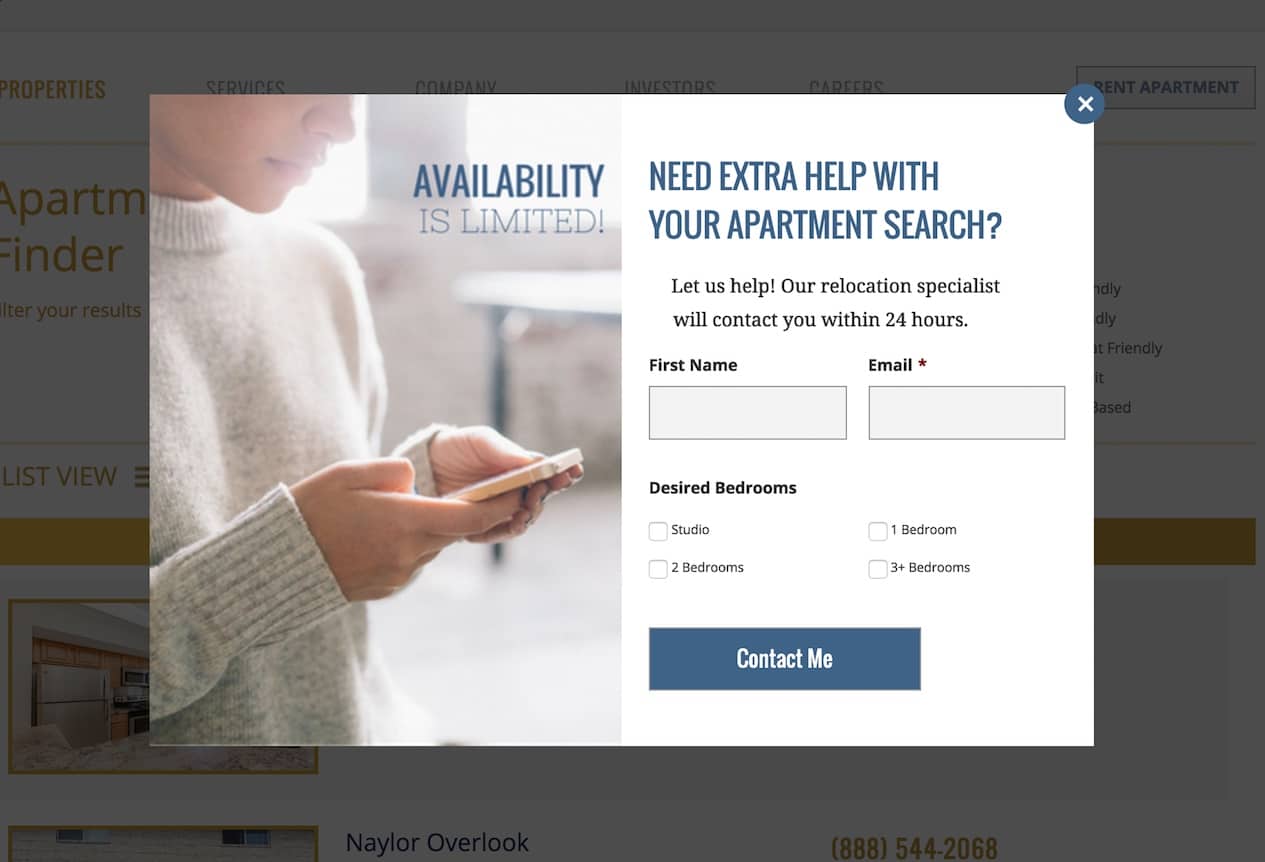
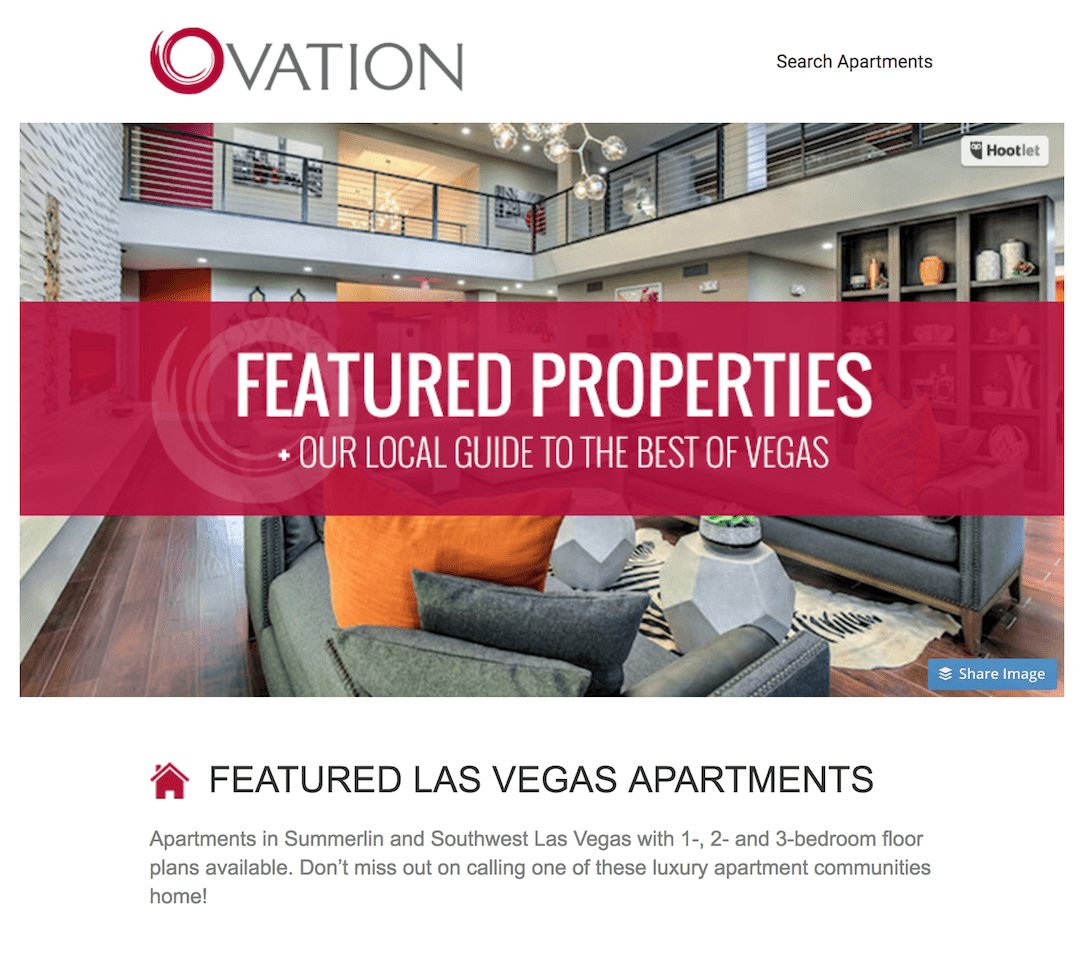
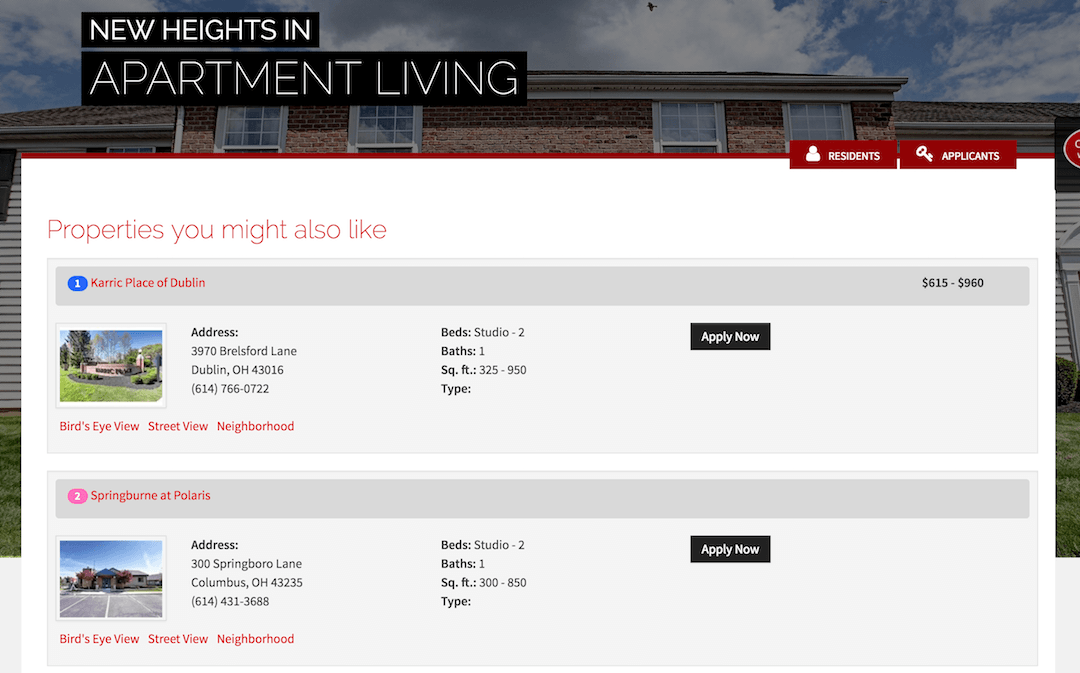
This is amazing stuff. So much that I can pitch to my friends in IREM® Central Florida and AAGO. My head is spinning knowing that someone else out there thinks just like I have been preaching and squawking about for years! GOOD STUFF @30lines
Thanks for stopping by, @JakeZachariah:disqus … glad to hear there are others thinking like this! We have some good friends at AAGO (I was living in Winter Park when I started 30 Lines), so please let me if there’s anything we can do to help with your pitch!
Probably the most intelligent and informative post I’ve ever read on multi-family marketing – and I’ve read a great number of them.
Thank you, Joe! I know you’ve been at this a while and have seen a lot, so I appreciate that coming from you!